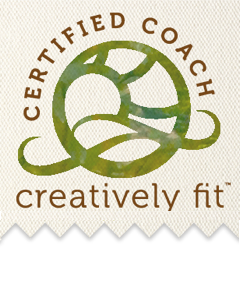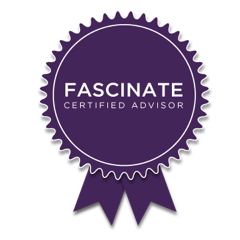 “Creative” has become a “buzzword” according to LinkedIn. Since Creativity is my area of expertise, this was of great interest to me. In response to the LinkedIn’s finding, experts say you should not use the word in your profile because the word is losing its meaning and it makes you sound like everyone else. It’s a shame that a word that represents the most significant gift of human intelligence has been trivialized by overuse.
“Creative” has become a “buzzword” according to LinkedIn. Since Creativity is my area of expertise, this was of great interest to me. In response to the LinkedIn’s finding, experts say you should not use the word in your profile because the word is losing its meaning and it makes you sound like everyone else. It’s a shame that a word that represents the most significant gift of human intelligence has been trivialized by overuse.
There are some positives about this. “Creative” was the #1 ”buzzword” in LinkedIn profiles in 2011 and 2012, #3 in 2013, and #2 in 2014. Claiming that you are creative in your profile indicates you know it is important. In a prior blog, I mentioned that in two consecutive IBM Global CEO studies, the CEO’s considered “creativity” to be the most important attribute for leaders and employees. Another positive is that the word “innovative” was #9 in 2011 and 2013, and not in the Top 10 in the other years. It is a good sign that most people are describing themselves as “creative,” rather than “innovative,” as the latter descriptor is more relevant to products.
A negative is that although leaders say they want creative employees, and prospective employees are selling their creativity and seeking creative places to work on LinkedIn, there is increasing employee disengagement in the workplace. This suggests a disconnect about the meaning of “creativity,” and how to enable it and use it. Hopefully, the “buzzword” phenomenon will pass; in the meantime, we can benefit from looking into some significant issues around the Creativity-Commodity dichotomy.
When I’m presenting or discussing “creativity” with a group, I often ask three questions:
1. How many of you feel that being creative is very important (to your organization, you)?
2. How many of you feel you and your colleagues are living up to your creative potential?
3. How many of you think about your creativity every day and do something to strengthen it?
Close to 100% of those asked believe that creativity is important. About 40% believe they are creative in some ways. When asked if they or their companies are doing anything to develop their creativity, usually there are some chuckles and few, if any, hands go up.
What gives? If individuals know creativity is important and know something is inhibiting it, why aren’t they more motivated to do something about it? In 18 years of formal education, I do not recall the subject of creativity ever coming up. Although there are many articles, journals, newspapers, books, and presentations about creativity, the decline in it, the myths about it, anecdotes about creativity successes, tips and techniques to stimulate it, and books about creative icons, it is rare to find content that is operational for creativity, to make it relevant in everyday work and personal life.
If people can’t distinguish their creative capabilities, they probably are a commodity or on their way to becoming one. In today’s competitive environment, that puts them into a very vulnerable position. A commodity is useful or valuable because it can readily be bought and sold, is interchangeable with other commodities of the same type because there is little differentiation, has uniform quality, and meets minimum standards. This is not a desirable category for an employee or job seeker in a demanding, complex, and dynamic environment.
Most jobs would benefit from creative employees. As Pixar’s CEO, James Catmull, says in Creativity, Inc.: “If you give a good idea to a mediocre team, they will screw it up. If you give a mediocre idea to a brilliant team, they will either fix it or throw it away and come up with something better. (Replace “mediocre” and “brilliant” with “creative” and you get his gist.) Companies want and need creative employees because the opportunity cost of the alternative is so high.
What can be done about this? If you’ve had any professional development training, you’ve probably already taken assessments that showed your strengths and how you do things. (Personally, I’ve taken at least four – Birkman, Meyers-Brigg (MBTI), StrengthsFinder, and Kolbe). Everyone has strengths. Companies assume you have the strengths needed to do the job for which you apply. They are looking for something more – to know how you are different and how you can be uniquely valuable to them. And they struggle to do this, so if you can help them…
You have a choice – commodity or creativity? Choosing creativity involves understanding the fundamental qualities and process and nature of personal creativity (addressed in a prior blog titled What is Creativity? Why Is It Relevant to Innovation?). It also involves a shift in focus. You can choose a commodity focus by continuing to focus on your strengths, getting better at fulfilling known requirements, working harder than others, and getting better compared to others. Or, you can choose a creativity focus by focusing on your differences, your unique value, who you are versus what you do, and how you are seen at your best. Understanding what creativity is and refocusing your attention in this way is a very powerful combination.
Recently, I discovered a “fascinating” tool for understanding the creativity focus and I added it to the unconventional CLUE Institute® and hellofuture toolkit. It is a unique way of understanding and tapping into your natural personal advantages, so I became a Fascinate Certified Advisor and affiliate.
You can check out the Fascination Advantage® Assessment at this link:
 Leaning In and Falling Over Conventional Wisdom
Leaning In and Falling Over Conventional Wisdom The Need for Creativity Warriors
The Need for Creativity Warriors



Leave a Reply